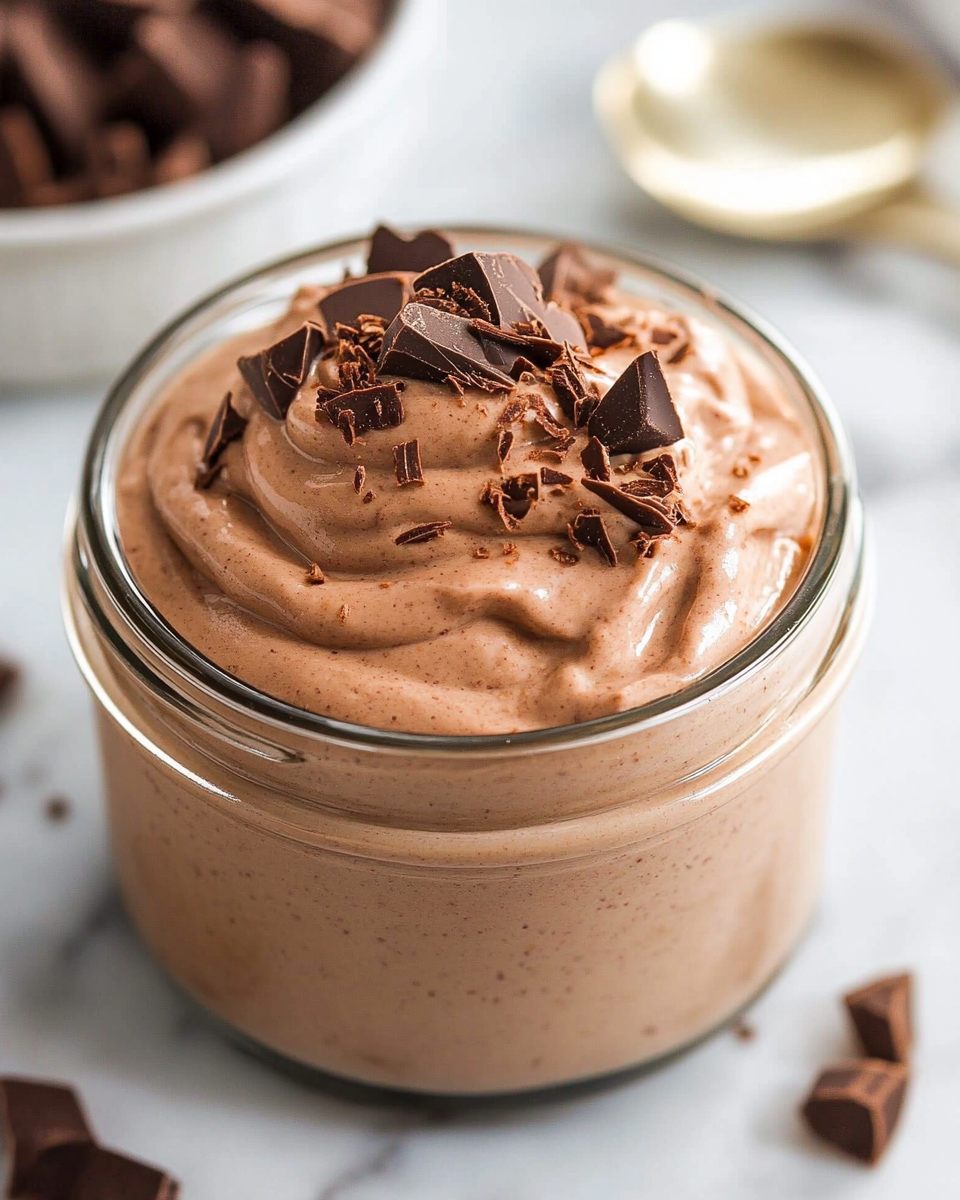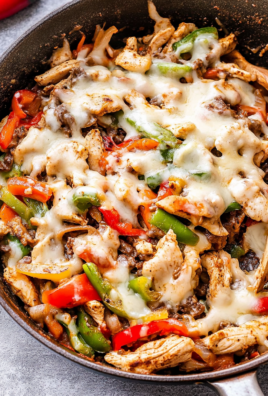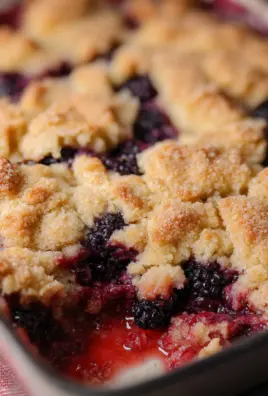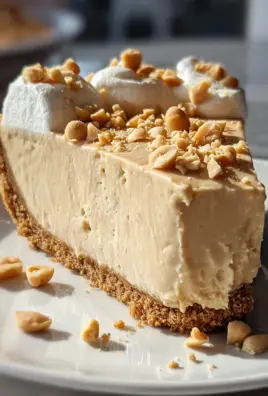Protein pudding is a rich, creamy, and nutrient-dense dessert or snack made primarily with Greek yogurt, protein powder, and nut butter. Unlike traditional puddings that require cooking and are often high in sugar and low in nutrients, this version offers a no-bake, high-protein alternative that fits into any healthy lifestyle.

Whether you’re trying to hit your protein goals, looking for a post-workout recovery snack, or just want a sweet treat that won’t derail your diet, protein pudding is a go-to option. It’s customizable, satisfying, and incredibly easy to make in just five minutes.
Why You’ll Love This Recipe
This protein pudding recipe has something for everyone. From fitness enthusiasts to busy parents or anyone aiming for a cleaner dessert, here’s why this will become a favorite:
- High in protein: Supports muscle recovery and satiety
- Customizable: Endless flavor combinations and add-ins
- Meal prep-friendly: Make ahead for the week
- Quick and easy: Ready in 5 minutes, no cooking required
- Versatile: Great as a snack, dessert, or even breakfast
Tools You’ll Need
Essential Equipment
- Mixing bowl: Use a medium-sized bowl to easily combine ingredients
- Whisk or spoon: Helps create a smooth, lump-free pudding
- Measuring cups and spoons: Ensures balanced flavor and consistent texture
- Airtight container: Ideal for storing leftovers or prepping in advance
Why Each Tool Matters
Each tool contributes to a smooth and efficient process. The right-sized bowl makes mixing simple and clean. Using a whisk ensures all protein powder is properly blended, avoiding chalky clumps. Measuring tools allow you to adjust sweetness and consistency without guesswork, and a sealed container keeps your pudding fresh in the fridge.
Preparation Tips
To achieve the ideal texture and flavor:
- Use room temperature yogurt for easier mixing
- Taste the mixture before adding sweeteners; some protein powders are already sweet
- Choose a flavored protein powder (like chocolate or vanilla) to boost taste without needing extras
- Add chia seeds for a thicker consistency and extra fiber
Ingredients List
Base Ingredients
- 1 cup (250 g) Greek yogurt (full fat for richness or low fat for lighter texture)
- ½ cup (40 g) protein powder (vanilla, chocolate, or unflavored)
- 1–2 tablespoons nut butter (such as peanut or almond)
- 1 tablespoon cocoa powder (optional, for deeper chocolate flavor)
- 1–2 tablespoons maple syrup or honey (adjust based on protein powder sweetness)
- Milk of choice (almond, oat, or dairy; only if needed for thinning)
Optional Flavor Add-Ins
- ½ teaspoon vanilla extract
- 1 tablespoon chia seeds
- A pinch of sea salt
These optional ingredients enhance the flavor profile and texture. Chia seeds provide added fiber and omega-3s. Vanilla extract deepens sweetness naturally, while sea salt balances the overall taste.
Step-by-Step Instructions
- In a mixing bowl, combine the Greek yogurt, protein powder, and nut butter.
- Add in cocoa powder, vanilla extract, and sea salt if using.
- Mix thoroughly using a whisk or spoon until smooth and creamy.
- If the mixture is too thick, add a splash of milk gradually until your desired consistency is reached.
- Taste the pudding. Add maple syrup or honey as needed for sweetness.
- Stir in chia seeds if using, and let the mixture sit for 5 minutes to thicken.
- Serve immediately or refrigerate in an airtight container for up to 3 days.
Flavor Variations
Experiment with different combinations to suit your taste or macros:
- Chocolate Banana: Add mashed banana and chocolate protein powder
- Peanut Butter Cup: Use chocolate protein and peanut butter
- Berry Vanilla: Mix in blended berries and vanilla protein
- Coconut Almond Joy: Add shredded coconut and almond butter with chocolate protein
Each variation offers a new flavor profile while keeping the base nutritional benefits intact. You can also top your pudding with fresh fruit, granola, or a drizzle of nut butter for added texture and taste.
Serving Suggestions
- Top with fresh fruits like strawberries, blueberries, or sliced banana for added antioxidants and natural sweetness.
- Add a sprinkle of granola for a crunchy contrast to the smooth pudding texture.
- Drizzle nut butter on top to boost healthy fat content and elevate the flavor.
- Layer in a jar with fruit and oats to create a protein parfait.
- Serve with dark chocolate chips or cacao nibs for a more indulgent treat.
- Chill before serving to thicken the pudding further and enhance its creaminess.
- Use as a dip for sliced apples or whole grain crackers.
- Freeze into popsicles using molds for a high-protein frozen snack.
These ideas not only make protein pudding more enjoyable, but they also allow you to adapt it for different times of the day and occasions.
Common Mistakes to Avoid
Despite its simplicity, there are a few common mistakes that can affect the flavor and texture of your protein pudding. Here’s what to watch for and how to avoid them.
1. Using the Wrong Type of Protein Powder
Not all protein powders mix the same way. Some plant-based powders can create a gritty texture. Whey and casein generally offer a smoother finish. Choose a protein that blends well and complements the yogurt flavor.
2. Adding Too Much Protein Powder
Overloading your pudding with powder can make it dry, chalky, and hard to mix. Stick to the recommended ratio or slightly adjust it based on the thickness of your yogurt.
3. Ignoring the Sweetness Level
Many protein powders are already sweetened. Always taste your base before adding honey or syrup to avoid ending up with an overly sweet dessert.
4. Skipping the Mix-Ins
While the basic recipe works well, mix-ins like chia seeds, vanilla extract, or sea salt can take the flavor and texture to the next level. Don’t skip them unless necessary for dietary reasons.
5. Using Flavored Yogurt
Flavored yogurts often contain added sugars and artificial ingredients that may clash with your protein powder. Use plain, unsweetened Greek yogurt for better control over flavor and nutrition.
6. Not Mixing Thoroughly
To avoid clumps, always use a whisk or blender. Poor mixing can result in inconsistent flavor and texture.
7. Over-Thinning the Pudding
While you may need a splash of milk to loosen a thick mix, too much can ruin the pudding consistency. Add liquid gradually and stop when it’s just right.
Avoiding these issues ensures your protein pudding is creamy, flavorful, and enjoyable every time.
Best Side Dishes to Serve With Protein Pudding
Pairing protein pudding with the right sides can elevate it into a more complete meal or a balanced snack plate. Here are eight complementary options:
1. Mixed Berry Salad
A side of fresh berries adds natural sweetness and antioxidants. Strawberries, raspberries, and blueberries work particularly well with vanilla or chocolate pudding.
2. Sliced Avocado on Whole Grain Toast
The healthy fats from avocado balance out the protein-heavy pudding, especially if you’re using a low-fat yogurt base.
3. Herbal Tea or Green Tea
A warm, soothing drink helps cut the richness of the pudding and aids digestion. Choose unsweetened options to keep it light.
4. Cucumber and Hummus
For a savory contrast, try a few cucumber slices with hummus. This pairing brings variety and fiber to your snack or meal.
5. Roasted Almonds
Nuts add crunch, fiber, and extra protein. A small handful pairs well with chocolate or peanut butter pudding flavors.
6. Oatmeal Energy Bites
Combine oats, dates, and a bit of cocoa to create simple no-bake bites. These add complex carbs and texture variety.
7. Rice Cakes with Honey
Rice cakes topped with a drizzle of honey offer a light and crispy complement to the creamy pudding.
8. Apple Slices
Crisp and juicy, apple slices are great for dipping into pudding or serving alongside for a refreshing finish.
Combining protein pudding with one or two of these sides can help round out a balanced macro-friendly plate that fuels your body without compromising taste.
Expert Tips for the Best Protein Pudding
Perfecting protein pudding comes down to choosing the right ingredients and applying a few small techniques that improve flavor, texture, and consistency. Here are several expert tips that will help you get the most out of this recipe every time.
Use Full-Fat Greek Yogurt for Creaminess
While low-fat yogurt can work, full-fat options give the pudding a much richer and smoother mouthfeel. This version also tends to hold flavor better and blends more easily with protein powder.
Add Chia Seeds for Texture and Fiber
Chia seeds not only thicken the pudding naturally, but they also provide extra fiber and omega-3 fatty acids. Allow the mixture to sit for 5 to 10 minutes after adding chia to help it reach the ideal consistency.
Balance Sweetness Last
Always taste your mixture before adding a sweetener. Protein powders can vary significantly in sweetness. Adjust with honey or maple syrup at the end so you don’t accidentally over-sweeten.
Choose Complementary Protein Flavors
Use protein powders with clean, natural flavor profiles. Vanilla and chocolate work well with Greek yogurt. Avoid overly artificial or strong-flavored powders that can clash with your base ingredients.
Chill Before Serving
Refrigerating the pudding for at least 20 minutes before serving improves the flavor and helps the pudding firm up. This is especially helpful when prepping ahead.
Storage and Reheating Instructions
Protein pudding is ideal for meal prep. It stores well and can be enjoyed straight from the fridge.
How to Store
- Place in an airtight container to prevent moisture loss and odor absorption.
- Store in the refrigerator for up to 3 days.
- Stir well before serving, especially if it has been sitting overnight.
Can You Freeze It?
Yes, you can freeze protein pudding, but the texture may change slightly. To freeze:
- Transfer into a freezer-safe container or silicone mold.
- Freeze for up to 2 weeks.
- Thaw in the refrigerator overnight and stir well before serving.
Reheating Instructions
This pudding is best served cold or at room temperature. Reheating is not recommended, as heating may cause separation and change the texture of the yogurt and protein powder mixture.
Frequently Asked Questions
Can I make protein pudding without Greek yogurt?
Yes, you can use other thick yogurts like Icelandic skyr or even dairy-free alternatives like coconut or almond-based yogurt. Choose one with a similar consistency for best results.
Is protein pudding suitable for weight loss?
Absolutely. It is high in protein, which helps control hunger and supports muscle retention. Keep an eye on portion size and added sweeteners to align with your goals.
Can I use plant-based protein powder?
Yes. Plant-based protein powders like pea or brown rice protein can work well. However, they may create a thicker or grainier texture compared to whey.
How do I thicken protein pudding without chia seeds?
If you don’t have chia seeds, reduce the amount of milk or choose a thicker yogurt base. You can also refrigerate the pudding for longer to help it firm up naturally.
Can this be eaten before or after a workout?
Yes. It makes an excellent pre-workout snack if consumed about 60–90 minutes before exercise. As a post-workout recovery option, it delivers high-quality protein and carbohydrates, especially when paired with fruit or granola.
Is this a good recipe for kids?
Yes, especially when made with mild flavors like vanilla and topped with fruit or a small sprinkle of chocolate chips. Adjust the protein powder amount based on age and dietary needs.
Can I turn this into an overnight oat recipe?
Definitely. Simply add rolled oats to the mixture and let it sit overnight in the refrigerator. In the morning, you’ll have overnight protein oats—a high-protein, grab-and-go breakfast.
Does it fit into keto or low-carb diets?
Yes, with modifications. Use unsweetened Greek yogurt, a low-carb or keto-friendly protein powder, and a sugar-free sweetener like stevia or erythritol.
Conclusion
Protein pudding is more than just a healthy dessert. It’s a flexible, nutrient-rich recipe that adapts to a variety of lifestyles and goals. Whether you’re after a post-workout snack, a satisfying breakfast, or a late-night treat that doesn’t ruin your diet, this pudding delivers on taste and nutrition.
Its minimal prep, endless flavor variations, and make-ahead convenience make it a staple in any balanced eating plan. With the right combination of ingredients and techniques, you can create a delicious, smooth, and satisfying pudding every time.
Protein Pudding
Ingredients
- 1 cup 250 g Greek yogurt (full fat for creaminess or low fat for a lighter option)
- ½ cup 40 g protein powder (chocolate, vanilla, or unflavored)
- 1 –2 tablespoons nut butter peanut or almond butter for creaminess and healthy fats
- 1 tablespoon cocoa powder optional, for a richer chocolate flavor
- 1 –2 tablespoons maple syrup or honey adjust to taste based on sweetness of protein powder
- Milk of choice almond, oat, or dairy milk – only if needed for thinning
- Optional Flavor Add-Ins
- ½ teaspoon vanilla extract
- 1 tablespoon chia seeds
- A pinch of sea salt
Instructions
- In a mixing bowl, combine the Greek yogurt, protein powder, nut butter, and any optional ingredients like cocoa powder or vanilla extract.
- Mix thoroughly with a whisk or spoon until smooth and well-blended.
- If the pudding is too thick, add a splash of milk gradually until you reach your desired consistency.
- Taste and sweeten with maple syrup or honey as needed.
- For added texture, stir in chia seeds and let the pudding sit for 5 minutes to thicken.
- Serve immediately or store in an airtight container in the fridge for up to 3 days.




Leave a Comment